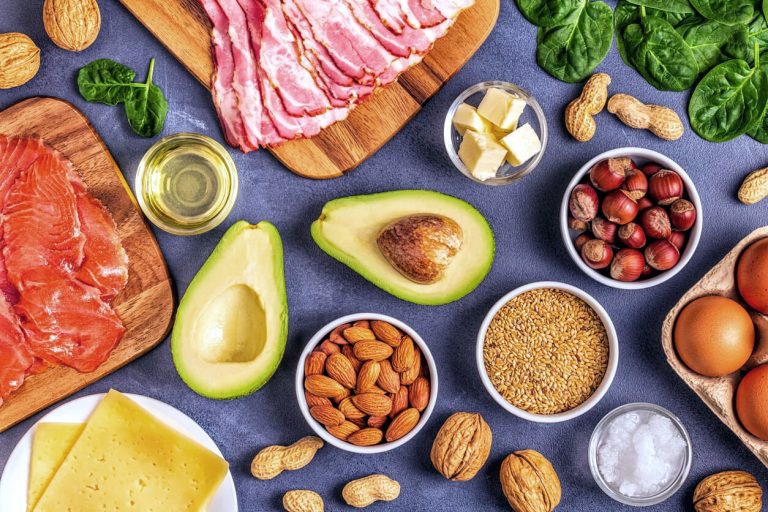Introduction
Intermittent fasting has been utilized by various people for a variety of reasons including dietary and religious over the past several centuries. In this article this article will examine the benefits on Intermittent Fasting (IF) as an exercise for weight loss and management tool. Let’s talk about the best way to begin Intermittent Fasting.
Before we get into the details of the details of how to start, it’s important to keep in mind that the first step in any fitness or diet program is to speak with your physician about what’s best for you and your body.
Let’s start by giving a brief explanation of what IF means. The fundamental idea is to eat food and do not eat according to an established schedule. There will be periods of eating and fasting. Fasting windows, or the time which you don’t eat could last between a few hours and several days.
The effects on your body’s health during intervals of fasting is examined more in depth in a different article titled how intermittent Fasting is Effective. For more specifics on the entire details of the technical aspects, check that article!

Types of Fasts
When you’ve figured out the basics of what IF is and the reasons why people use it, let’s see the steps to begin. We’ll begin by discussing the different kinds of fasts that are popular and how they function. We’ll begin with shorter fasts and discuss progression choices as you get comfortable and confident in the techniques you use for fasting.
You shouldn’t immediately begin an overnight fast for 72 hours. As with all things, beginning slow is the most effective method of achieving success fasting. Beginning with an 8:16 break (eight hour of eating, and then 16 hours without) is a common method.
8:16
In the article How I lost 65 pounds in a Year, Abby says she explained the fast of 8:16 as simply not eating breakfast. Let’s discuss why this is logical. If you’re fasting for 16 hours while eating for 8, you’re likely to eat in a time during the day in order you can have a complete night’s rest. Additionally, fasting during your are asleep means that you’re more likely to see success with your fasting.
For Abby it was a way of skipping breakfast, having lunch later than 12, and dinner at 8. During her fast, Abby took plain tea, black coffee and electrolyte water. It was the only thing (or drink) that had energy was eaten during the meal time between 12 pm and 8 pm. Therefore, her eating period was between 12 pm and 8 pm. She ate a fast from 8 pm until 12 midnight the next day. Read the post Intermittent fasting as well as caffeine to learn more about what you should consume during an intermittent fast.
The fasting method 8:16 is a great method to test fasting. It is also a very easy fasting for the majority of people to sustain throughout the day. It is possible to have the windows changed throughout the day in order to fit your time and schedule. That means you could choose to skip meals or breakfast. Make the most of it. It’s a preferred choice for celebrities like Terry Crews for mental clarity and weight control. It’s not just him. Read this article in Harper’s Bazaar about other famous people who have a fast! However, it’s not the only fast that is popular.
5:2
Another variation of the 8:16 time-slice is 5:2. I know many numbers! The idea of 5:2 is five days of the week you eat as normal and the rest of the days you consume a fast. This is a fantastic option to begin the 8:16 even if you’re not keen on doing it all day. As with 8:16, you are able to alter your fasting time to fit into your the time of day and your preferences. You can set your two days of fasting in reverse or spread them over different days of your week. Also, you may decide to skip eating dinner one day and eat breakfast the next day (if you’re following an 8:16-fast).
As you progress in your fasting, you may also alter your method of fasting to become more agressive. For instance, your usual may be 8:16-hour fast, while your two other days could be fasts that last for 24 hours. This would be a gradual progression of a program for fasting which you’ve grown accustomed to. It’s unlikely to begin in your usual fasting using a 5:2 method.
All hours of the day
Let’s now talk about a 24-hour fast. Also, Abby talked about this in her How I lost 65 pounds in a Year article. She said that once she was accustomed to her routine of having breakfast in the morning the first day of her 24 hour fast consisted of not eating lunch. Thus, her fasting lasted from dinner on the night prior to dinner the next day.
Take a look at this article What Intermittent Fasting Functions to understand how this extended fast affects your body. It affects the body different than a standard 8:16, which is why it’s advised not to use it as the first type of fast you try. It’s a natural progressing step once you’re at ease with shorter fasts. It’s not recommended as an option for long-term fasting since it may strain your body in the long run. However, there are many benefits and it can be done through the majority of people who practice fasting.
Longer Fasts
There are many options to fast for between 34 and 72 hrs. Because this article is about the best way to begin eating a healthy diet, the suggestion is to focus on a shorter, more manageable fasting which teaches you about the body, its limits as well as your strengths. As you gain confidence and trust in your fasting, you may want to explore more aggressive ways of fasting that extend beyond 24 hours. However, be aware that they are not recommended as routine practices and should only be attempted carefully by experienced and experienced fasters.
Tips for Success
You’ll be hungry when you fast. It’s normal. However, it’s not always enjoyable. When we’re not accustomed in fasting and hunger may be interspersed with lots of emotions such as frustration, anger or even fear. The emotions that arise from them are rarely conducive to sound decision-making. Therefore, here are some suggestions to help you navigate through the physical, as well as emotional side effects of fasting. There’s absolutely no reason that fasting has to be an unpleasant experience.
Plan your actions
The practice of being intentional about your fasting is a fantastic way to achieve success. Make a list of what you will eat. If you’re a coffee-drinker ensure you know where the first (and the second and third …) cup ) will be sourced from. It’s important to drink it in black, which isn’t easy for many. As absurd as it may sound smile while doing something can trick your brain into thinking that you’re enjoying yourself. I’ve witnessed this happen to acquaintances before. It’s not a bad idea to give it a try.
Are you not a fan of coffee? You can drink simple tea cold or hot. There are a myriad of choices. If you’re looking to drink something a bit sweeter, you can try hibiscus tea. It’s a herbal tea that naturally sweet. Matcha tea and green tea will provide you with a caffeinated kick to kick start your day. Read this article Intermittent fasting as well as Coffee for more information on the different options you have during an intermittent fast.
If you’re opting to go fast in the evening, avoiding breakfast in lieu of dinner Make a plan to remain active. This could be an ideal time to go for a walk or work out. Once you’re more at ease with fasting, you’ll be able to develop the habit of drinking tea or coffee (probably decaf) as you gather with family or with friends at dinner. At first I would not put myself in situations that require you to be excluded from an event with a large group. It’s tough.
Stay focused
Many people choose intermittent fasting as a part of an overall fitness or diet strategy. However, for many people, fasting can be a bit of a struggle at the beginning. Therefore, for those who have difficulty starting eating a healthy diet, I suggest you keep your windows easier to handle initially.
If you’re changing the way you consume, don’t be very restrictive when you first start out. Be flexible with your duration of fasting and diet goals when you have to. If you limit everything regarding the food you consume and the way you eat, you may find it difficult to control everything in one go. If you must start small, you should do it. The long-term success of your business is more important than tiny, first gains.
Create a system of support
Fasting can create a profound emotional impact on the majority of people. It’s also not always something that people are prepared for. A help system with people who are aware of your plans to fast and are prepared to assist you is vital. Allow them to help you by letting them know in advance that if you’re feeling particularly angry, it’s not because of them, but rather because you’re really missing the breakfast bagel you had in the morning. People are more accepting in the event that they can understand your situation.
Conclusion
IF is now a favored and beneficial component of a lot of people’s fitness and health goals. Knowing the basics of IF is a good method to make sure you succeed when you decide to begin Intermittent fasting. If you’re interested in incorporating it into your daily routine it is possible to join with many famous people (and ordinary individuals like myself!) who have found it to be an excellent way to achieve targets. My best suggestion I could offer to anyone who is looking to give it a go is to begin slowly and take your time. Remember, you’re not doing this for yourself, but to yourself!










